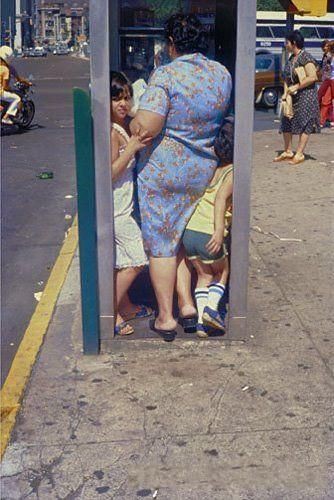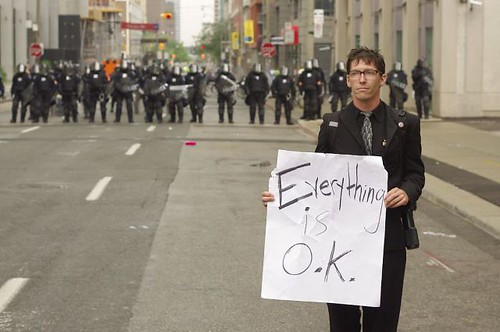The glasses, the solarized effect and the apparently odd manner of my presentation on a serious topic like panic attacks. People apparently who know me or have seen my work as a psychologist in some way expect a video presentation of a more ‘professional’ style. So I get asked why did I do it like that? To which I answer, there is an old rule of psychotherapy - don’t give people what they expect. Its really a rule of human communication in general - don’t give people what they expect.
After they hear this explanation they seem to be satisfied because no more is said or asked by them. This has struck me as a bit odd because my answer I think begs another question - why not?
Why not give people what they expect?

If anyone ever asked me this I am not sure what I would answer. My first thought is that it would depend on the situation where the unexpected communication occurred. In psychotherapy I think it certainly has its place. If a client comes to therapy they will have an expectation of what is going to happen what they will say, what I will say and so forth.
If they leave with what they expected then the session was OK to average, to not much good. If the person gets what they did not expect in the session then it is much more likely that the session was more effective. Of course not every session a client attends can provide some kind of profound epiphany. But in the overall approach there needs to be at times unexpected communications by the therapist.
This will stop the therapy becoming routine. In one way psychotherapy is about unbalancing the client or putting them in a state of disequilibrium. They enter therapy with a psyche or psychological makeup that is a functional whole. That functional whole may be causing them pain but it still is a functional whole. If therapy can destabilise that functional system then the parts of that system are more able to be rearranged such that a new structure is obtained. That new structure can then lead to less pain being experienced by the individual. It seems reasonable to conclude that if the client gets something they did not expect then that will have a destabilised effect.

Society is like personality. Revolution destabilzes it. Once done then change is more likely to occur. Psychotherapy can be seen as creating a revolution in the personality.
Another reason is something far less ethereal and recondite. It gets the Free Child of the client into the room and that is something you certainly want in therapy. If that video was of me standing there is psychotherapist type clothing, in a psychotherapist type manner in front of a white board with a pointer what ego states of the viewer are going to be elicited. Probably Adult with maybe some interested Child if the topic of panic attacks was of interest.
Because of my presentation I would suggest that much more Child ego state in the viewer is elicited. First they are far more likely to remember it than if it was done in the other way. As indeed would happen in a therapy session if something unexpected happened. If I can get the client’s Free Child into the communications with me that is a very good thing for a successful outcome for the session.

However we now have another problem. Because I have let out one of my trade secrets people will now begin to expect the unexpected. Thus we end up back to where we were before.
However there are ways and means to deal with these things and I can’t tell all my trade secrets. Well not all at once.
Graffiti























